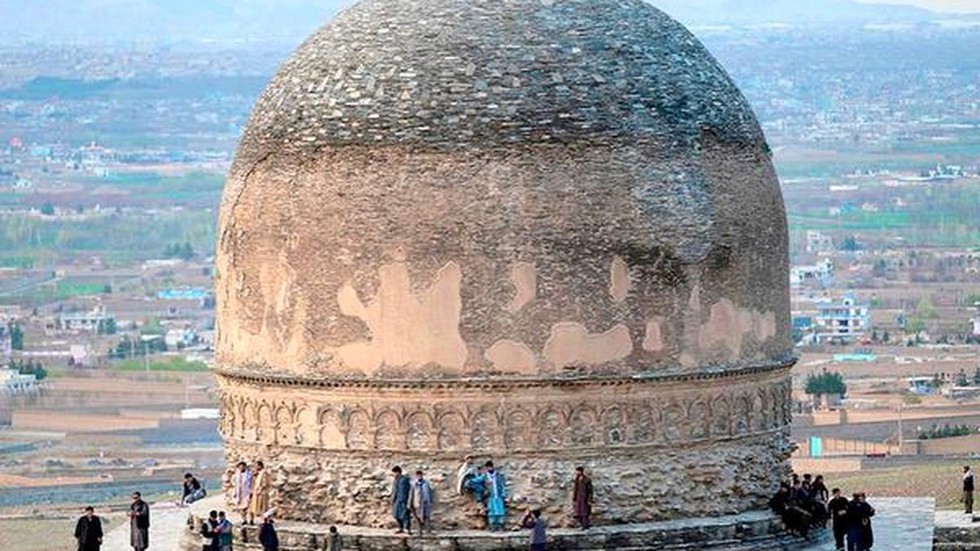
Bamiyan Buddhas

24.04.2025
Bamiyan Buddhas
|
For Prelims: About Bamiyan Buddhas, Background of Destruction |
Why in the news?
Taliban's changing approach towards heritage sites in Afghanistan.
About Bamiyan Buddhas
- The Bamiyan Buddhas, carved in the 6th century CE, were two monumental statues of standing Buddhas measuring 115 feet and 174 feet in height, embedded into the sandstone cliffs of Bamiyan Valley, central Afghanistan.
- These statues are considered exemplary of the Gandhara School of Buddhist Art, which reflected a unique blend of Indian, Persian, and Greco-Roman artistic influences.
- The Bamiyan Buddhas, named Salsal (meaning “light shines through the universe”) and Shamama (“Queen Mother”), stood 55 metres and 38 metres tall.
- These statues represented a fusion of Gupta, Sassanian, and Hellenistic styles, representing a unique confluence of civilisations.
- The statues represented the confluence of cultural traditions and were significant markers of the spread of Buddhism across Central and South Asia between the 1st and 13th centuries.
Background of Destruction
- The Taliban, a hardline group that emerged in the 1990s, imposed an extremist interpretation of Islamic law, which included banning art, education for girls, and public expression.
- On 27 February 2001, the Taliban officially announced its plan to demolish the Bamiyan Buddhas, deeming them un-Islamic.
- Over 25 days, the statues were systematically destroyed using explosives, marking one of the most egregious acts of cultural vandalism in modern history.
- In 2003, UNESCO designated the Bamiyan Valley as a World Heritage Site, despite the irreversible damage done.
- In 2021, a 3D holographic projection temporarily recreated the statue of Salsal, offering a new way to engage with the lost heritage.
Source: The Hindu
With reference to Bamiyan Buddhas, consider the following statements:
Statement-I: The Bamiyan Buddhas, carved in the 8th century CE.
Statement-II: The Bamiyan Buddhas, named Salsal (meaning “light shines through the universe”) and Shamama (“Queen Mother”), stood 55 metres and 38 metres tall.
Which one of the following is correct in respect of the above statements?
A.Both Statement-I and Statement-II are correct, and Statement-II is the correct explanation for Statement-I.
B.Both Statement-I and Statement-II are correct, and Statement-II is not the correct explanation for Statement-I.
C.Statement-I is correct, but Statement-II is incorrect.
D.Statement-I is incorrect, but Statement-II is correct.
Answer D